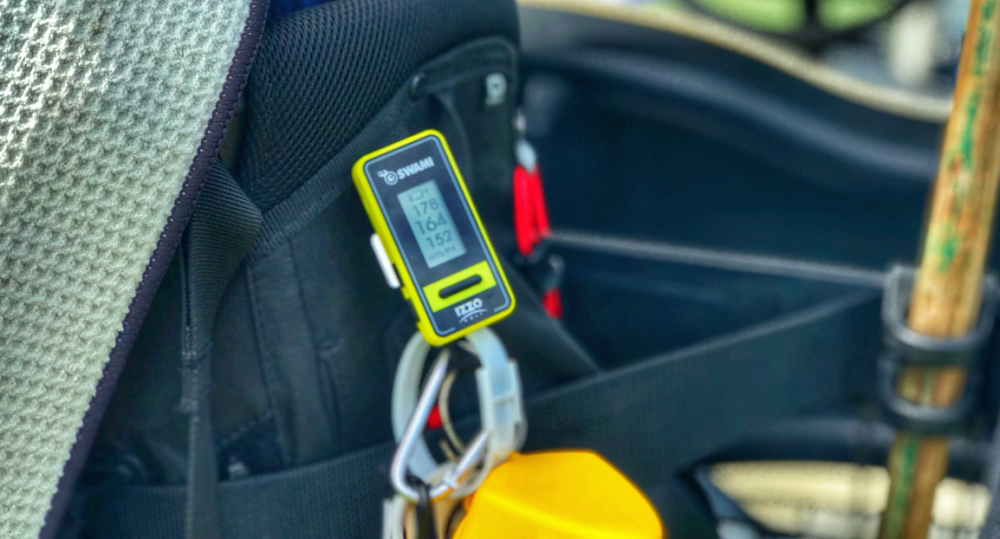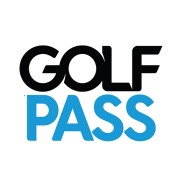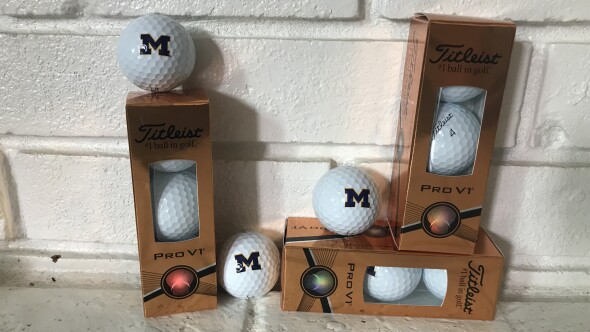There have never been more ways to get a yardage on the golf course. The field is growing like crazy. Garmin, a GPS company, now makes rangefinders. Bushnell, a rangefinder brand, now makes GPS watches. Callaway, predominantly a clubmaker, sells both.
The majority of golfers I play with these days have some form of GPS wearable, rangefinder or use a golf app on their smartphone. Even caddies carry rangefinders now. No more pacing off sprinkler heads.
The cost of devices and accompanying apps can vary greatly. You can use something with one function or something incredibly dynamic. They can provide pinpoint accuracy to an object or a general front-middle-back number using satellites. They can be USGA conforming or not.
What's right for your golf game and budget? I've been trying various devices the last few years and aim to help you narrow it down.
A few questions you should consider when shopping for golf distance measuring devices:
- Do I want a device that could aid other areas of my life besides on the golf course?
- Do I want it to keep score and possibly give me advanced analytics?
- Am I willing to pay a subscription fee?
- Is distance to the flag or simply front-middle-back yardage more important to me?
- Is it allowed in tournaments? (The USGA has this handy FAQ about conforming distance measuring devices and use cases)
Here is a breakdown of all the various popular tools golfers are using these days to get a yardage. Don't worry, many top courses still provide analog yardage books, if that's still your thing.
Mobile phone apps for golf distance measuring (free-$50/yr)

Assuming you already have an Android or iOS smartphone, you don't have to buy anything extra to use a number of various free scorecard and GPS apps. These apps, like TheGrint, Hole 19 or GolfNow, come with detailed flyover maps and let you drag and drop your landing zone yardage to stay short of trouble or identify carries. Most of these apps all provide extremely detailed shot tracking down to what club you hit and whether you missed left, right or short. Others offer social connectivity, advanced statistics and you can even book tee times.
Cons: Who wants to pull their phone out and unlock it 50 times a round? It will also suck the battery dry, which is why more and more carts have USB plugs now. There's also nothing worse than pulling out your phone for yardage and seeing a push notification or text message that interrupts your focus. Premium apps are normally subscription-based, so you could end up spending hundreds or more over the years.
Handheld, golf-specific devices ($109-499)

For golfers who want something as vibrant as the screen as their smart phone but don't want all the distractions, a handheld or clip-on device is the way to go. Another benefit over a wearable watch is they have larger screens that can pack far more information in them. Some can be incredibly rich with tech. For example, Garmin's G80 ($499 MSRP) even has a mobile launch monitor in it.
But you can find something more entry level in price and get something very handy, too. We just tried IZZO's new Swami Voice Clip. Once you overcome the relatively easy learning curve to select a course, you’ll be able to see yardage to the front, middle and back edge of the green you’re playing toward, and an easily-accessible bar-shaped button on the front of the unit will cause it to speak the yardage to the middle of the green to you if you’ve got it clipped to your pocket, belt or hat (clipping it to a strap on your golf bag is a good way to go, too). It also has a scorecard and shot distance measurement capabilities.
The company’s stated battery life of more than ten hours means it should get you through at least 36 holes before needing to be recharged. It retails for $140, but you can check out this Revolution Golf exclusive currently for $117 ($107 for GolfPass members).
An activity tracker with a golf distance measuring (and scoring) app ($250-749)

I have had the most experience with an activity watch, the Garmin Vivoactive and Vivoactive HR. It's a competitive price point at about $249 and includes a lot besides golf functionality. Popular universal features include wrist-based heart-rate tracking and step counts. It will send text alerts to your wrist, but does not have as many features or as brilliant a display as the Apple Watch or Garmin's high-end Fenix line (up to $749 MSRP). You can use it for running, cycling, swimming, cardio and more.
When you buy a Garmin device, the company's Connect and Golf apps are included and are pretty powerful. The Vivoactive doesn't track all the details of golf-specific watches like clubs hit, but the scorecard automatically displays once you reach the green, requiring one or two taps to move on to the next hole. I also like the shot measuring tool, especially if you hit a drive offline and need to know when to veer into the bush and start hunting.
Cons: A true Jack-of-all trades, master of none for fitness fanatics, it doesn't provide as many analytics and details as a golf-only wearable, or premium Apple Watch apps.
A strictly golf GPS watch with no tethering to phone ($110-500+)
If you want to keep your phone far, far away from your golf game (and that's good if you plan on playing USGA competitions), stick to a golf-focused watch that requires no tethering to your smartphone's Bluetooth. Golf watches typically come pre-loaded with courses worldwide so you don't have to sync or start a round on your smartphone.
But once you decide you want a golf-focused watch, the fun begins. From what I can tell, there are essentially three categories of them:
Basic with no app
These are the most affordable and if you don't want advanced analytics it's the way to go. My first delve into this genre of watch was with the Swami Izzo Watch, which will be released later this fall in time for the holidays. It is simple and much lighter on the wrist than Apple watch and has a 10-hour GPS battery life. It's also more intuitive than activity watches in that it advances holes automatically. You can keep score on it but it doesn't sync to an app or provide advanced analytics. Off the course, it tells time and that's it.
Golf app with game tracking
These watches provide more advanced scoring and analytics and usually have a more robust display with overhead views. Usually in the $180-300 range.
Golf app, game tracking and shot tracking
These watches come with the option to add on club sensor attachments. The SkyCaddie LinkGT and Garmin's Approach S20 bundle are among those with this feature. | Browse Golf Watches and GPS at GolfBalls.com
Cons: This is a very crowded space and not only are there myriad brands but each has various models and price points. You're really going to have to determine which features you crave and which you don't in order to spent the right amount of money and get out of it what you want.
Apple Watch with third party apps ($300-500+)
The difference between Apple Watch and Garmin or other golf-centric watches is you have to use third-party apps, which are powerful but not as intuitive. Apple Watch is also reliant on your phone's Bluetooth connection and you have to start the round in your phone app. It takes a fair amount of time testing the various apps and settling on one as they all have different strengths and weaknesses.
Cons: You must pay extra for premium golf app versions, there are many distractions from non-golf apps and it lacks some of the intuitiveness of other golf-focused wearables. I've spent most of the summer playing golf with this device and various apps; you can read my Apple Watch review here.
Rangefinders ($150-400+)

They aren't "smart" like a watch or phone but there is a beautiful simplicity in a laser rangefinder. There is no app or Bluetooth needed. The battery lasts dozens of rounds. It has one core job: shooting the distance to certain objects.
The fact it is so simple seems to make the various companies struggle to come up with legitimate innovation. They've tried things such as adjusted yardage for slope (useful, but non-conforming per the USGA), suggested clubs to hit, vibrating alerts and more. You really don't need any of this. All that really matters is if the laser works. I've had a $150 Nikon and a $700 Leupold model. The Leupold feels more sturdy and has some incremental advantages in the tech but the more budget-focused options work just fine. I recently wrote about the difference in user experience between a rangefinder and GPS watch.
Cons: It takes a few more seconds to pull out and shoot with a rangefinder than simply stare down at your wrist. Unlike a wearable, it is easy to lose. I left my Nikon in a golf cart and never recovered it. Flying with one in my bag makes me nervous, too. On the course, the Kryptonite for a rangefinder is blind shots, or user error in shooting a tree behind the green. Whenever I use my rangefinder, I generally shoot the target 2-3 times to be sure. | Browse Rangefinders and GPS at GolfBalls.com
(Editor's Note: GolfPass may earn a commission on certain purchases made via links posted in our articles. GolfPass does not receive compensation for product reviews.)
A speaker that provides GPS
Here's a new option for 2020: A portable speaker that gives you yardage, too. Bushnell just introduced its Wingman, which has bluetooth-connected music but also has GPS, so you can get it to audibly tell you yardage. It also mounts to your cart with Bushnell's exclusive "BITE" magnetic feature. (MSRP: $149.99)
The verdict
I use a combination of a watch and rangefinder, but I use the rangefinder for yardage and the wearable for scoring. I find whenever I'm lazy and just use my wearable's front-middle-back yardage instead of getting a specific number to the flag, my approach shots aren't as sharp. You can use app scoring tools after the round in a mobile or desktop app rather than during the round if you'd like, too.
What do you like and not like about your distance measuring device? Let your fellow golfers know in the comments below!
Tim Gavrich also contributed to this report.























I just want a device the will measure the shot I took, I cannot walk to the shot to measure it because I have ti use a cart.
Most of the golf watches have it. Garmin VIvoactive and approach s62 have it. Don’t think any Apple Watch apps do
I have watched the video of the GPS watches which have been developed to "help" you in your game and quite frankly if I was playing with someone constantly checking and tapping their way through the game I would drag the watch from their wrist and throw it into the nearest bush.
Golf is a social game.
Golf is a game of skill which you develop over time.
Computers are what we are all escaping from they,in my opinion,do not belong anywhere near a golf course.
I have a Tasco range finder and it has helped my game. I did use a Garmin front, middle and back of green with the ability to move the flag position. But if the course does not have a pin placement card it can be off 15-30 feet depending on pin placement. The Tasco is more accurate.
I know GPS technology has come a long way since they first came out but I still won't play with one.
I like to see the exact yardage to any pin, the exact distance to carry a bunker, a hazard or how far I need to lay up, or the false front of an elevated green. With a laser rangefinder it also lets me spot any tiers or slopes on the green.
I have 2 Bushnell laser rangefinders, one conforming for the 12-15 tournaments I play in any given summer and the non conforming one I use for every other game I play.
Garbage...swing away no matter the distance or what old farts might be up ahead...devices are for losers
This 'old fart' walks 18 holes at 7,000 feet altitude in 3 to 3 1/2 hours. So swing away if you can keep up.
This one is part of the well armed militia the second amendment mentioned
I have a small device that measure front, middle and back of greens and works good for my, not so accurate game, but would like one that also shows hazards and distances. New courses can play havoc on my ball when I didn't know what is around the corner or over the hill. Just knowing what a general distance is helps me to have a more enjoyable round.